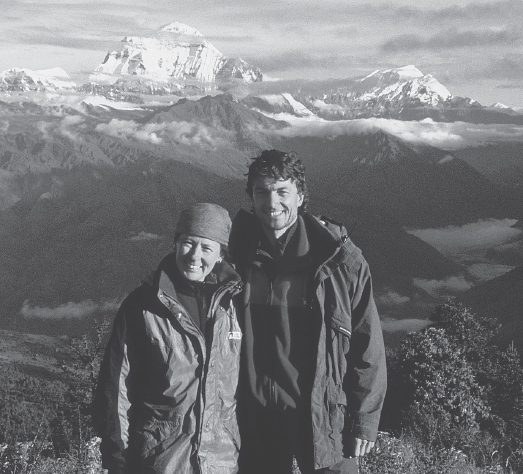
My introduction to trekking in Nepal came in 1982 when, as the official photographer for the first Canadian expedition to attempt Mount Everest, I joined my teammates for the walk to base camp.
Unlike today’s commercial expeditions that fly almost to the mountain, allowing precious little time for acclimatization and orientation, we deliberately chose to walk almost all the way from Kathmandu along the trail system that the British had taken during the first ascent of the mountain in 1953. This paid off as the entire team was perfectly acclimatized after almost three weeks of gradual ascent. But what I didn’t realize until much later was that the extra time that we spent on the trail affected the way I came to regard foot travel in the Himalaya.
Prior to that trek, I had focused only on the challenges and perceived dangers of the climb. Never having been to the Himalaya, I had no idea of the rich diversity of the natural and human landscape. By going the extra distance, I discovered the biggest reward of all, the hill people.
I also had the good fortune to have as a tent mate the expedition doctor, Stephen Bezruchka. I can’t think of a better authority to initiate a neophyte to the mightiest mountain range on Earth than the person whose book Trekking in Nepal was already considered to be the bible of guidebooks for the region.
Since that wonderful introduction to the Nepal Himalaya, I have trekked most of the established trails and many of the more obscure tracks in the country. Given this perspective, I can say without exaggeration that the welcoming nature of the hill people of Nepal, and the integrity of their trail system, is without equal.
In 1989 my wife Baiba and I joined Stephen on a magical trek in western Nepal. Stephen used the opportunity to add this trek as a chapter in his book. I’ll never forget the image of him striding up the trail, tape recorder in one hand, stopwatch in the other, asking occasionally for directions in fluent Nepali, totally at ease in the mountains he had chosen as his second home. On all our other treks when we weren’t graced with Stephen’s company, this book was a constant companion. In 1994, with our friend Ang Nima Sherpa of Kunde village, we linked six treks into one. Starting at Pokhara in the west, we looped around Annapurna, and continued another 80 days and 600 kilometers to arrive on the sunlit patio at Ang Nima’s guesthouse in Kunde village where we sipped chang and admired the stellar view of Ama Dablam. There were sections along that route that were covered in Stephen’s book that even Ang Nima hadn’t been on.
Over the years, this book has continued to evolve, adding even more tips on how best to interact with and understand the wonderful denizens of this former Himalayan kingdom. In the seventh edition, Stephen announced that it was time for someone else to take over the onerous, but rewarding task of revising Trekking in Nepal. Fortunately, Alonzo Lyons stepped forward, and in this eighth edition you will find an up-to-date guidebook for greater Nepal with the most current descriptions for Annapurna, Everest, Langtang, and Helambu, along with enticing new details on side trips in these areas.
Pat and his wife, Baiba, with the still unclimbed South Face of Dhaulagiri and the Kali Gandaki valley to the right behind them (Photo by Pat Morrow)
Alonzo has also added The Trails Less Traveled. This chapter will beckon to people hoping to get away from the popular venues and closer to the heart of this remarkable culture.
The best advice I can offer to the independent trekker who wants to acquire valuable insight into Nepal and in so doing, themselves, is this: Arm yourself with the 35+ years of distilled wisdom that are contained within and use this book as a cultural and geographical reference as much as a directional guide. By following the book’s basic tenets for helping to minimize tourism’s impact on the local people and the environment, you’ll come to enjoy the hospitality of this unique country as much as I have.
—Pat Morrow
Mountain photographer, filmmaker, author, and the first person to climb the Seven Summits—the highest peaks on all continents